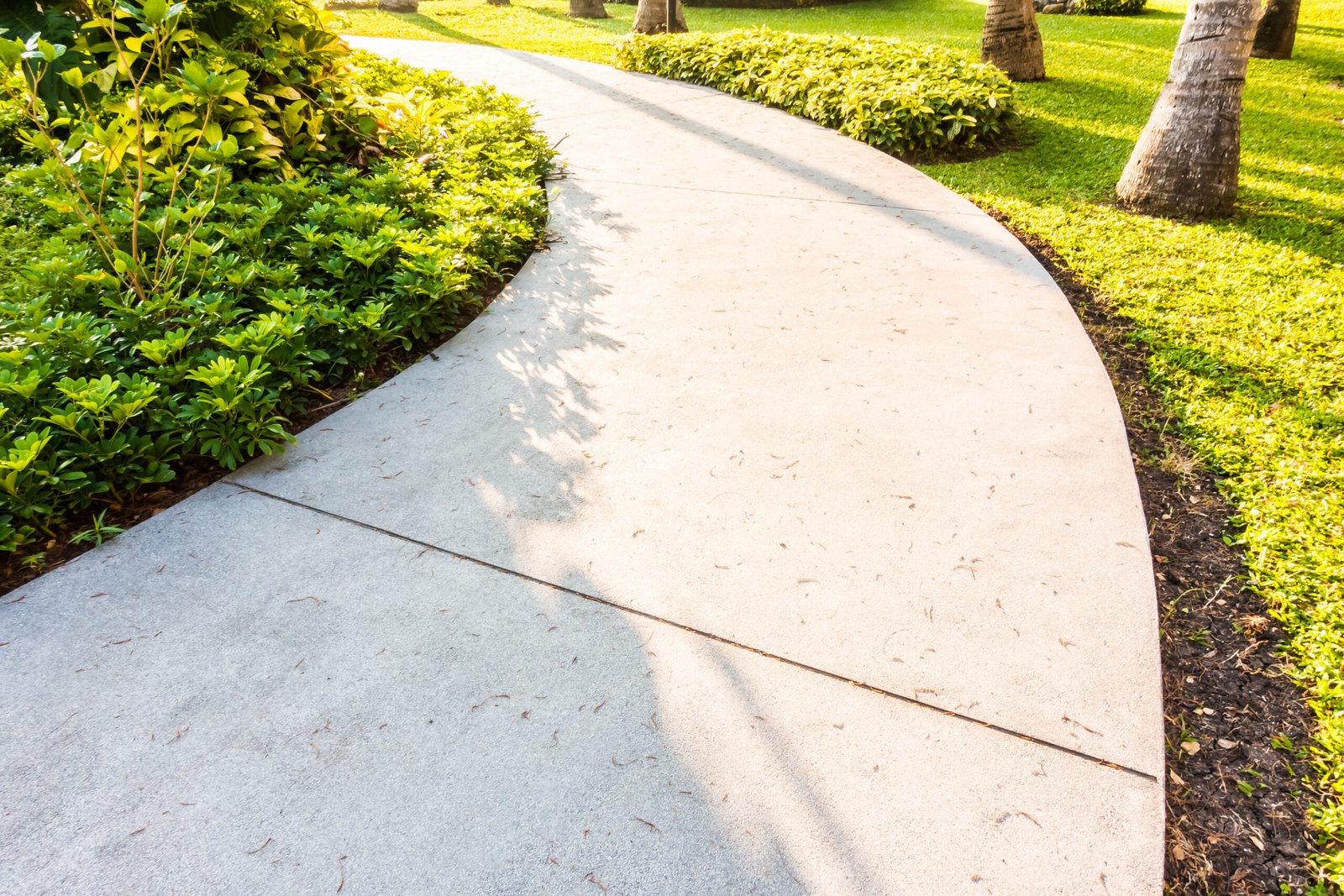Have you ever stepped outside to find cracks in your driveway and wondered, “Could I have prevented this?” Are you looking for simple ways to keep your driveway looking impressive all year round? If you’ve been feeling uncertain about the best approach to maintaining and sealing your concrete driveway, don’t worry—you’re not alone.
In this post, we’ll look into why driveway sealing is so important for Australian homes, plus share a handy step-by-step guide to sealing concrete drives. We’ll also address common questions like “How often should you seal an aggregate driveway?” and “Do I need to seal my concrete driveway?” By the time you’re done reading, you’ll know exactly how to protect your concrete driveway so it has the best chance of staying smooth and durable for many years.
You can expect an in-depth explainer on everything from routine cleaning to choosing the right sealant for your concrete. We’ll cover topics like how to seal a new concrete driveway, how to reseal concrete driveway surfaces that have seen better days, and common pitfalls to avoid. Let’s clear up any confusion and get on track to a pristine, long-running driveway.
Sealing Your Driveway: Preparation And Process
To get the most out of your driveway sealant, you need proper preparation and an understanding of how to apply it. This involves cleaning and checking for damaged sections. By following a methodical approach, you’ll end up with a sleek, effective coating that bolsters your driveway’s durability.
How To Clean And Prepare Concrete For Sealing
The first step in sealing your driveway is ensuring it’s free from dirt, stains, and moisture. Sweep away any leaves, dust, and debris. If you spot grease or oil stains, tackle them with a specialised concrete cleaner or a mild detergent. Rinse the surface thoroughly, and allow it to dry for at least 24 hours in dry Australian weather conditions.
How To Seal A Concrete Driveway Vs. Aggregate Driveway
Sealing a concrete driveway and an aggregate driveway share similarities, but the texture of exposed aggregate can make it a bit trickier. Aggregate driveways have small stones on display as part of the surface. This often requires more attention when washing and rinsing to clear out any dirt lodged among the pebbles. If you use a pressure washer, try a gentle setting to avoid dislodging the aggregate.
Choosing The Right Sealant For Effective Concrete Protection
The range of sealants on the market can be overwhelming. You’ll see water-based, solvent-based, acrylic, epoxy, and more. Consider your main concerns—whether that’s UV resistance, slip resistance, or rapid drying. If you live in a particularly sunny region, look for UV-stable formulations. For wet or humid areas, you might prefer a product that emphasises waterproofing.
Sealing Tips And Best Practices
Even professionals can slip up if they skip the essential steps, so it’s wise to familiarise yourself with practical tips. These best practices focus on safety, achieving a professional look, and dodging typical sealing blunders.
How To Seal Your Driveway Safely
Safety begins with picking the correct protective gear. Wear gloves, safety goggles, and protective clothing to shield your skin from any contact with chemicals. If you’re using a solvent-based sealer, make sure the area is well-ventilated to minimise inhalation risks. Ventilation is typically a non-issue outdoors, but it’s helpful to be aware if any nearby enclosed spaces could trap fumes.
Also, keep pets and children away from the work zone, as wet sealant can irritate skin. In case of accidental skin contact, wash thoroughly with soap and water. When disposing of leftover sealer or cleaning materials, follow the council guidelines in your local area. A bit of caution goes a long way in keeping your driveway project safe and pleasant.
Sealing Concrete Driveway Tips For A Professional Finish
Achieving a smooth, even finish isn’t as difficult as it sounds. First, work in manageable sections. Applying too much sealer in one go can lead to puddles, streaks, and an inconsistent texture. If you notice pooling, use your roller or brush to spread it out immediately.
Another tip is to maintain a consistent rolling or spraying technique. Random motions can leave visible lines or an uneven coat. Pay close attention to edges, corners, and areas where the driveway meets walls or paths. These spots are often missed or over-coated, leading to edges that stand out. Lastly, allow enough drying time between coats. Rushing through reapplication may trap moisture or debris, causing bubbles.
Avoiding Common Sealing Mistakes
A typical oversight is using the wrong sealer for your surface. Not all sealers are created equal, so using a high-gloss finish on a slip-prone slope, for instance, might be risky. Another is failing to clean the driveway thoroughly before sealing. Any trapped dirt or moisture can hamper the sealant’s adhesion, leading to peeling or flaking later.
It’s also wise to keep weather conditions in check. Sealing when the temperature is too low or too high can adversely affect drying times and the final outcome. And while you might feel compelled to stack on thick coats for ultimate protection, applying too much sealer at once can lead to uneven curing or discolouration. Moderation is key to a uniform finish.
Resealing Concrete Driveways

Even if your concrete driveway is sealed properly at the start, it won’t remain bulletproof forever. Over time, that protective coat weakens. Resealing is a straightforward way to refresh the barrier and help your driveway handle the daily grind.
How To Reseal Concrete Driveway Without Hassle
Resealing a driveway that’s had years of wear is similar to the original sealing process, with a few extra cautionary steps. First, clean the entire surface thoroughly. Next, look for discoloured or peeling areas, which might indicate an incompatible product was used previously or that the sealant has broken down. You may need to remove old, flaking sealant with a specialised stripper or by light grinding.
Once the surface is free from the remnants of old sealer, treat any cracks with a concrete repair kit. After making sure it’s moisture-free, apply the new sealant. Follow the same procedure as you would for a fresh surface, keeping coats thin and even.
Coat Driveway: When And How To Reapply Sealant
If you’ve noticed that your driveway is losing its sheen or there are new stains that won’t wash away, it might be time for another round of sealing. Ideally, you want a stable weather pattern—avoid forecasted rain for at least 24 hours. Give the surface a deep clean and wait until it’s completely dry. Then, coat your driveway the same way you did before, adhering to recommended drying times between coats.
Patience is key during this stage. Walking or driving on a freshly sealed driveway can cause impressions or markings. If you can keep vehicles off the driveway for around 48 hours, you’ll typically end up with a more resilient finish.
Balancing Cost And Long-Term Durability
Some may try to cut costs by using cheap products or skipping steps. This might seem like a money-saver initially, but in the long run, it could lead to frequent resealing and higher repair bills. High-quality sealants and proper prep work extend the time between reseals, making the total cost over the driveway’s lifetime much more reasonable.
It’s also worth factoring in aesthetics and resale value. A well-maintained, sealed driveway can enhance your property’s overall look and potentially increase its value. Any expense you put into resealing might pay for itself in convenience, durability, and eventual property value gains.
Conclusion
Summing up, driveway sealing isn’t rocket science, but it does require consistent attention. By staying on top of cleaning, repairs, and sealing schedules, you give your concrete driveway a fighting chance against the harsh Australian climate. The payoff is a surface that looks fresh, handles wear and tear with ease, and lasts much longer.
If you’ve been debating, “Should you seal concrete driveway?” or “How to seal your driveway effectively?”, the answer is clear: a sealed surface offers that extra line of defence against the everyday factors that can degrade concrete. Whether you’re protecting a new driveway or reapplying a coat to an older one, the process is straightforward once you know what steps to follow.
Ultimately, a well-cared-for driveway adds real value to your home’s curb appeal and durability. Don’t wait until you see major cracks before taking action. With a regular upkeep plan, the right products, and a watchful eye, your driveway will remain a reliable and stylish part of your property for years to come.
theblueridgegal.com (Article Sourced Website)
#Practices #Driveway #Maintenance #Sealing
